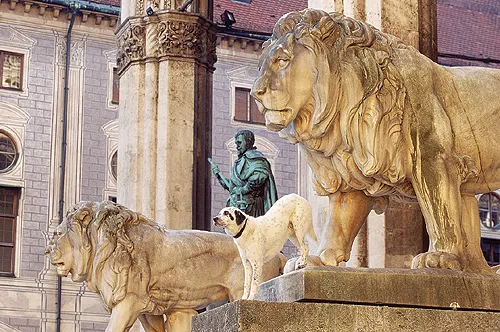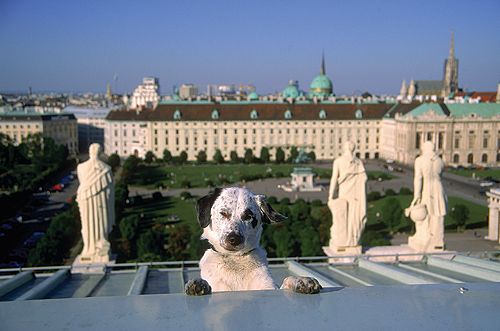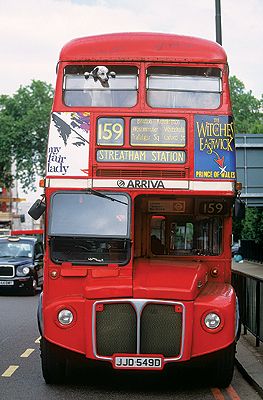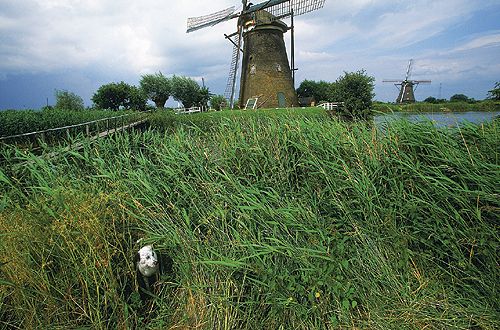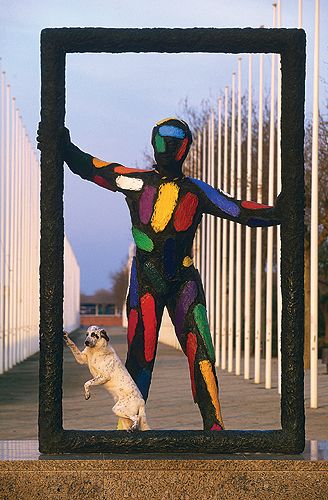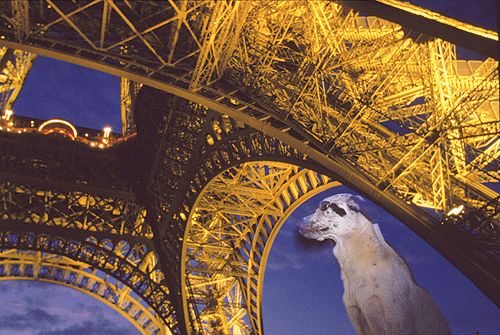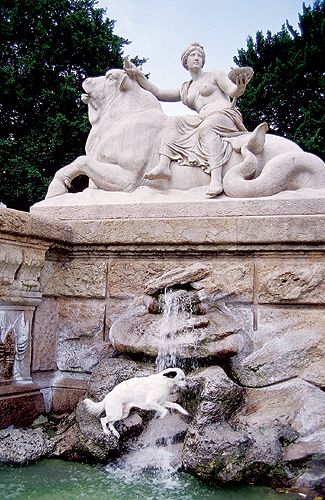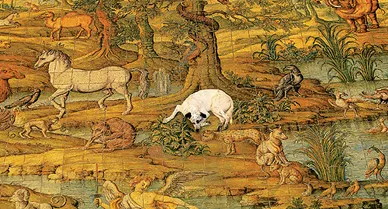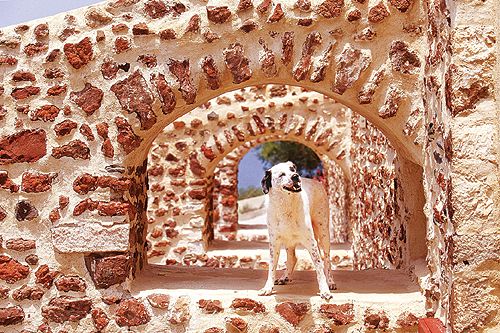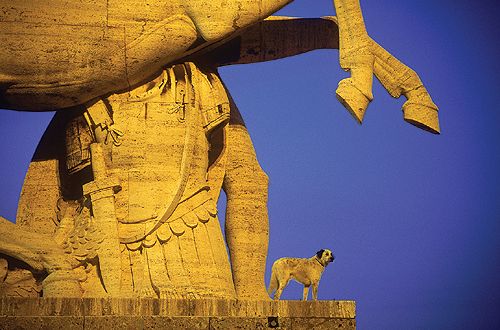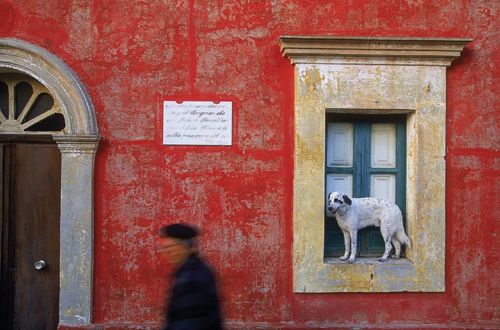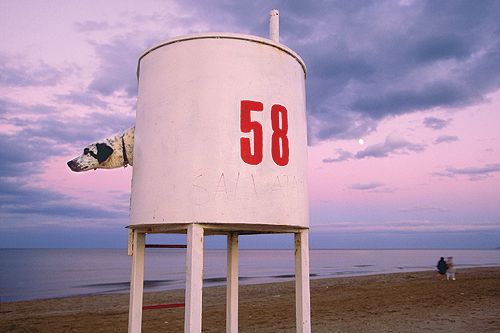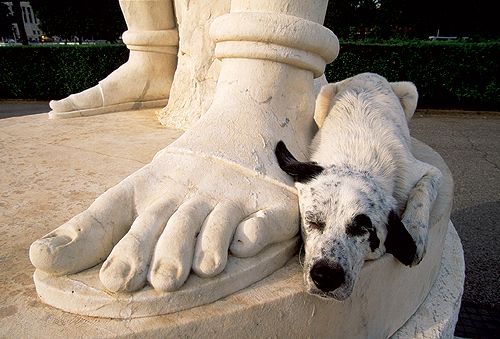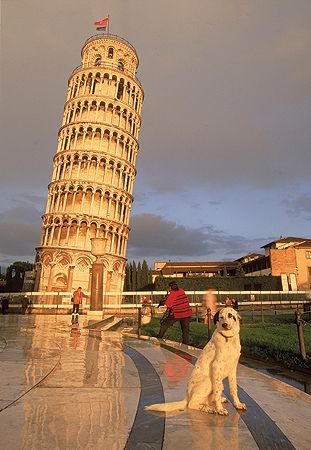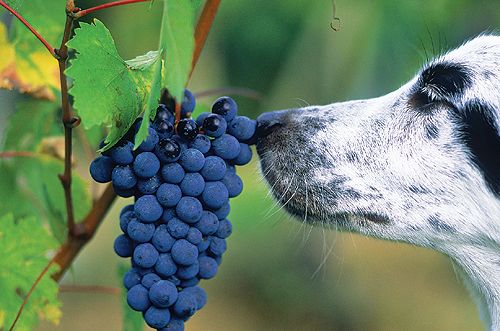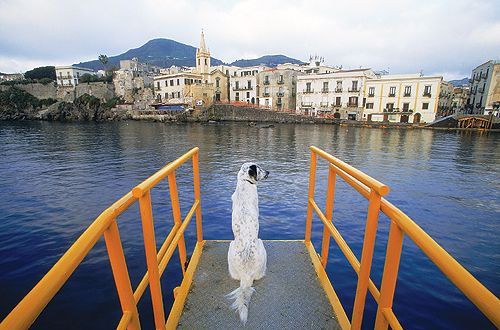Bone Voyage
On assignment with Europe’s most peripatetic canine
One day eight years ago, a young landscape photographer from Vienna was visiting a farm near Verona, Italy, when he learned about a spotted puppy with black ears that no one wanted. The photographer, Toni Anzenberger, adopted the dog and named him Pecorino, thinking it meant "little sheep" in Italian. Only later did Anzenberger learn that he'd named his new best friend after a cheese. "At least Pecorino sounds cute in German, like a clown's name," Anzenberger says. "It's not like calling your dog Gorgonzola."
Then, when Anzenberger brought the dog with him on an assignment in Tuscany, Pecorino kept running into the picture. At first Anzenberger was frustrated. But he soon realized that Pecorino added character to the pictures. So he began photographing the dog everywhere, on the streets of London and the shores of Greece, next to windmills in the Netherlands and statues in Rome.
Traveling with a canine can be challenging. To enter England and Scandinavia, Anzenberger had to prove that Pecorino didn't carry rabies, which involved waiting several months while the dog underwent blood tests. In Lisbon, Anzenberger caused the subway to be stopped after he and Pecorino boarded a train; security guards enforcing the no-dogs policy escorted the pair aboveground. Most of the time, Anzenberger and Pecorino travel by car; both have a fear of flying.
Pecorino's fame has garnered the duo some unusual privileges. They were allowed to take over two double-decker buses for a shoot in London. The Church of San Michele Arcangelo, in Capri, permitted Anzenberger to photograph Pecorino on its 245-year-old tiled floor, which depicts Adam and Eve's expulsion from Paradise. Most human beings aren’t permitted to step on it.
Pecorino has a flare for modeling. The pooch often chooses his own poses, and looks left and right on command, Anzenberger says. Cats or female dogs don't distract him. Once he hears the camera shutter stop clicking, he strikes a new pose. When he has finished his work, he demands to be petted. He prefers being petted even to eating, though he does like fresh bread and spaghetti. And he attracts a crowd. Once, in Barcelona, a bus full of Japanese tourists saw Anzenberger photographing Pecorino on the sidewalk, and they all got out and joined in. Anzenberger himself, who is 36 and lives in Vienna with his wife, also a photographer, is almost never recognized.
A few years ago, a devoted fan in Austria introduced Pecorino to a female pointer mutt that looked a lot like him. They’ve had eight puppies. Four have a black spot above the eye, like their father, but none has his personality. "The children take after their mother," Anzenberger says. "They are wilder." Anzenberger says Pecorino is happiest at exhibitions of his photographs, where people line up to pet him for hours on end. He knows he's a star. As Anzenberger says, it wasn't his decision to go into canine portraiture—it was Pecorino's.
